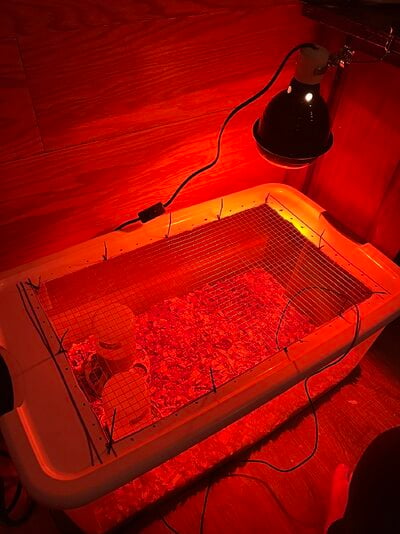MarionIN4Chickens
In the Brooder
- May 30, 2023
- 14
- 27
- 36
Hey y’all I’m new to hatching eggs and I’m having an issue getting my brooder up to temp. I’m on day 15 of hatching coturnix quail so I’m anxious about not getting the temperature high enough before they start hatching. I have an inkbird temperature probe set up touching the bedding directly under the brooder lamp and it’s not reading higher than 81 degrees! I left it overnight to heat up in a room that’s 72 degrees consistently. The lamp is a 125 watt bulb. I’ll attach photos so you can see the set up. If anyone has any suggestions please send them my way asap! I’ve got two days to figure this out before chickies are due






